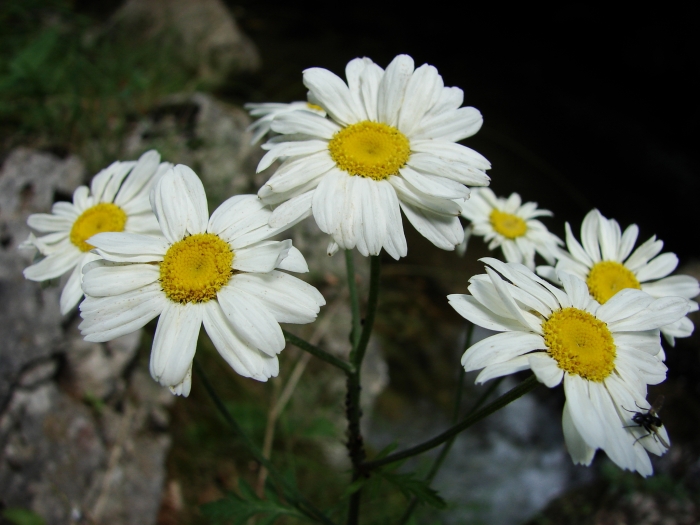Creme Brulee Daisy
(Tanacetum corymbosum)
Creme Brulee Daisy (Tanacetum corymbosum)
/
/

© xulescu_g
CC BY-SA 4.0
Image By:
© xulescu_g
Recorded By:
Copyright:
CC BY-SA 4.0
Copyright Notice:
Photo by: © xulescu_g | License Type: CC BY-SA 4.0 | License URL: http://creativecommons.org/licenses/by-sa/4.0/ | Uploader: xulescu_g | Publisher: iNaturalist |




















Estimated Native Range
Summary
Tanacetum corymbosum, commonly known as Creme Brulee Daisy, is a perennial herb in the Asteraceae family. It is native to a range of habitats including grasslands, meadows, and open woodlands across Europe, Western Siberia, and Turkey. This species typically reaches up to 3 feet in height and is characterized by its clusters of white, daisy-like flowers with yellow centers that bloom in summer, providing a showy display. The foliage is aromatic when crushed and the plant has a bushy, clumping form.
Creme Brulee Daisy is valued for its ornamental appeal, particularly its ability to attract pollinators such as bees and butterflies. It is often used in border plantings, cottage gardens, and as a cut flower due to its long vase life. This plant prefers well-drained soils and thrives in full sun, making it suitable for xeriscaping. While generally low-maintenance, it can be susceptible to powdery mildew in humid conditions. Deadheading spent flowers can encourage a longer blooming period and prevent self-seeding.CC BY-SA 4.0
Creme Brulee Daisy is valued for its ornamental appeal, particularly its ability to attract pollinators such as bees and butterflies. It is often used in border plantings, cottage gardens, and as a cut flower due to its long vase life. This plant prefers well-drained soils and thrives in full sun, making it suitable for xeriscaping. While generally low-maintenance, it can be susceptible to powdery mildew in humid conditions. Deadheading spent flowers can encourage a longer blooming period and prevent self-seeding.CC BY-SA 4.0
Plant Description
- Plant Type: Herb
- Height: 2-3 feet
- Width: 1.5-2 feet
- Growth Rate: Moderate
- Flower Color: Yellow
- Flowering Season: Summer
- Leaf Retention: Deciduous
Growth Requirements
- Sun: Full Sun
- Water: Medium, High
- Drainage: Fast
Common Uses
Border Plant, Drought Tolerant, Low Maintenance, Rock Garden
Natural Habitat
Native to grasslands, meadows, and open woodlands across Europe, Western Siberia, and Turkey
Other Names
Common Names:
Scientific Names: , Tanacetum corymbosum, Chrysanthemum corymbosum subsp. corymbosum, Chrysanthemum corymbosum var. corymbosum, Pyrethrum achilleae, Pyrethrum achilleaei, Pyrethrum tanacetifolium, Pyrethrum tauricum, Pyrethrum webbianum, Tanacetum corymbosum var. corymbosum
GBIF Accepted Name: